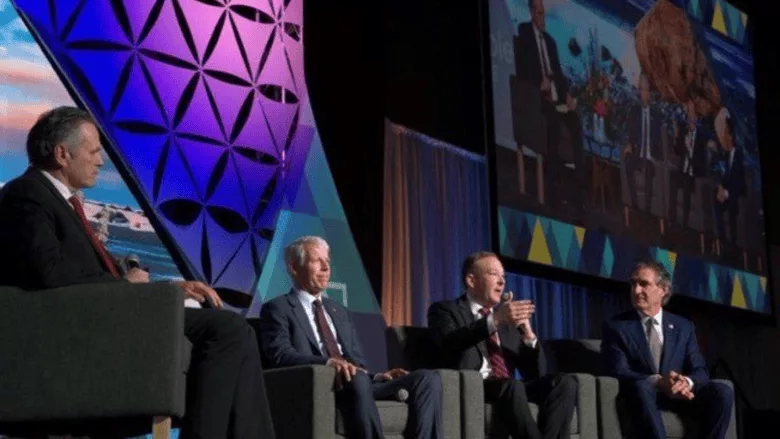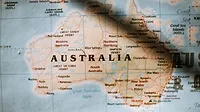Zeldin's Alaska Tour Sparks Debate Over Energy Future
EPA Administrator Lee Zeldin just wrapped a whirlwind, week-long tour across Alaska

Image courtesy of the EPA
EPA Administrator Lee Zeldin just wrapped a whirlwind, week-long tour across Alaska, delivering a message loud and clear: the Last Frontier could be the launchpad for what he calls “America’s energy dominance.” But not everyone is on board with that vision — and some locals are raising eyebrows about what’s being promised, and what might be overlooked.
Zeldin, joined by Interior Secretary Doug Burgum and Energy Secretary Chris Wright, kicked off the trip in Alaska’s oil-rich North Slope before heading south to Anchorage, Whittier, and the remote village of Chenega. At the heart of his visit was a pitch familiar to many Alaskans — that developing oil, gas, coal, and critical minerals in the state is not only an economic imperative, but a national security priority.
“Alaska stands as an American energy powerhouse,” Zeldin wrote in an op-ed published this week on Fox News. “It’s a vital gateway to energy dominance, economic prosperity, and national security.” He cited the state’s massive reserves — half of the nation’s coal, fourth-largest crude oil reserves, and second-largest natural gas — as an underused goldmine.
Zeldin’s message echoes the Trump administration’s push to revive fossil fuel production. “We can’t afford not to produce Alaskan energy,” he declared. “It’s a matter of urgency, humanity, and national security.”
Economic Promise or Environmental Risk?
At the Alaska Sustainable Energy Conference in Anchorage, Zeldin, Burgum, and Wright addressed over 1,000 attendees, promoting what Governor Mike Dunleavy dubbed a “golden age” for Alaska through energy development. The trio also met with business leaders, contractors, and representatives from industry groups such as the Alaska Oil and Gas Association and the Alaska Minerals Association.
But critics argue that while the talk of jobs and prosperity is alluring, the rush to unlock Alaska’s resources comes with real trade-offs. Environmental advocates warn that ramping up fossil fuel extraction could jeopardize the fragile ecosystems many Alaskans depend on, including fisheries and subsistence hunting grounds.
“There’s no such thing as risk-free drilling,” said a representative from a local conservation group who asked to remain unnamed due to their role on a tribal advisory board. “We’ve seen what happens when the balance tips too far toward extraction — communities are left with the mess when things go wrong.”
Zeldin emphasized strong Native support for energy development, pointing to his meeting with the Chenega tribe and their openness to new infrastructure and job creation.
“I was struck by their kindness, resilience and openness to energy development in their state,” he said. He also referenced Native Inupiat Eskimos in Northern Alaska who “do not want to be suspended in the 19th century” without electricity or heating.
Yet the Alaska Federation of Natives, who also met with Zeldin during his visit, remains more cautious. While many Native communities do seek infrastructure investment and reliable energy, that doesn’t always translate to support for large-scale extraction projects.
“Energy independence is important, but it needs to be done with our input, and in a way that protects the lands we’ve lived on for generations,” said an AFN spokesperson.
Beyond the energy pitch, Zeldin toured cleanup efforts on Joint Base Elmendorf-Richardson, where new technology is being deployed to remediate soil contaminated with PFAS — a toxic "forever chemical." He also reviewed EPA-funded remediation projects in Whittier’s decaying Buckner Building and engaged with environmental staff in Anchorage.
“This isn’t just about oil and gas,” Zeldin said during a roundtable with EPA employees. “It’s about ensuring our core mission to protect human health and the environment is fulfilled — even as we pursue bold new energy strategies.”
Still, that dual narrative — promoting environmental health while calling for expanded fossil fuel development — leaves some scratching their heads.
“You can’t say you’re protecting human health while greenlighting oil and coal extraction in sensitive areas,” said one EPA staffer off the record. “It’s a contradiction we wrestle with every day.”
Zeldin's Alaska visit set the stage for the Western Governors’ Association Annual Meeting later this month in Santa Fe, where energy policy is expected to be a top item on the agenda. But as the administration gears up for a national energy revival, the question remains: can Alaska really be the engine of American prosperity without compromising the environment and the rights of its Native communities?
The answer, like the state itself, is vast and complicated.
Looking for a reprint of this article?
From high-res PDFs to custom plaques, order your copy today!







